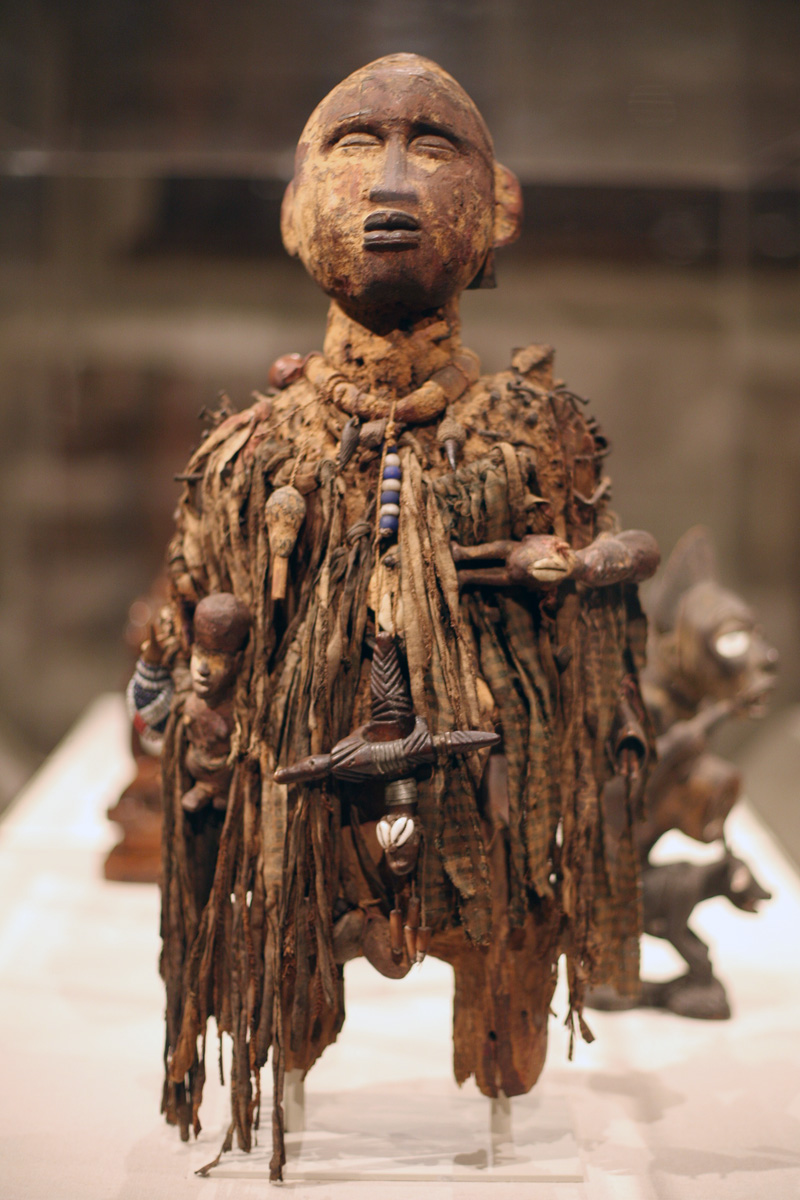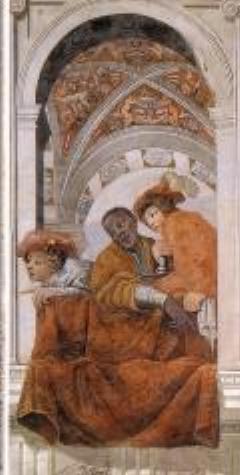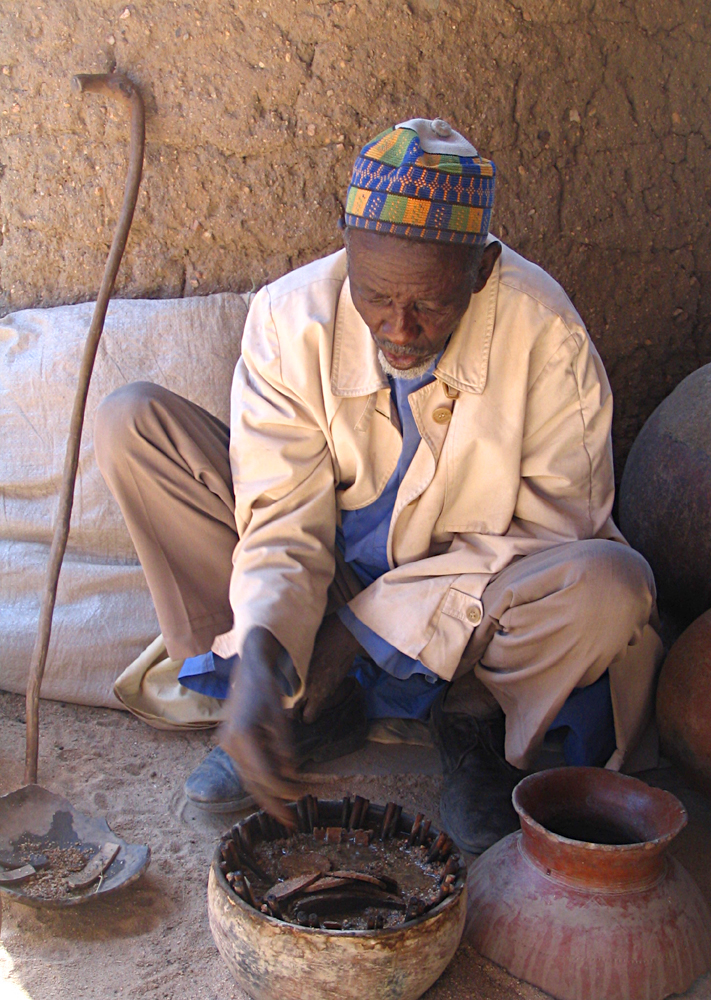|
Minkisi
or (plural varies: , , , or ) are spirits or an object that a spirit inhabits. It is frequently applied to a variety of objects used throughout the Congo Basin in Central Africa, especially in the Territory of Cabinda that are believed to contain spiritual powers or spirits. The term and its concept have passed with the Atlantic slave trade to the Americas. Meaning The current meaning of the term derives from the root , referring to a spiritual entity or material objects in which it is manifested or inhabits in Proto-Njila, an ancient subdivision of the Bantu language family. In its earliest attestations in Kikongo dialects in the early seventeenth century, it was transliterated as in Dutch, as the ''mu-'' prefix in this noun class was still pronounced. It was reported by Dutch visitors to Loango, the current territory of Cabinda, in the 1668 book '' Description of Africa'' as referring both to a material item and the spiritual entity that inhabits it. In the sixteenth ce ... [...More Info...] [...Related Items...] OR: [Wikipedia] [Google] [Baidu] |
Fetishism
A fetish is an object believed to have supernatural powers, or in particular, a human-made object that has power over others. Essentially, fetishism is the attribution of inherent non-material value, or powers, to an object. Talismans and amulets are related. Fetishes are often used in spiritual or religious context. Historiography The word ''fetish'' derives from the French , which comes from the Portuguese ("spell"), which in turn derives from the Latin ("artificial") and ("to make"). The term ''fetish'' has evolved from an idiom used to describe a type of object created in the interaction between European travelers and Native West Africans in the early modern period to an analytical term that played a central role in the perception and study of non-Western art in general and African art in particular. William Pietz, who, in 1994, conducted an extensive ethno-historical study of the fetish, argues that the term originated in the coast of West Africa during the sixteenth ... [...More Info...] [...Related Items...] OR: [Wikipedia] [Google] [Baidu] |
Nganga
A ''nganga'' (pl. banganga or kimbanda) is a spiritual healer, diviner, and ritual specialist in traditional Kongo religion. These experts also exist across the African diaspora in countries where Kongo and Mbundu people were transported during the Atlantic slave trade, such as Brazil, the southern United States, Haiti and Cuba. Etymology ''Nganga'' means "expert" in the Kikongo language. The Portuguese corruption of the meaning was "fetisher." It could also be derived from ''-ganga'', which means "medicine" in Proto-Bantu. As this term is a multiple reflex of a Proto-Bantu root, there are slight variations on the term throughout the entire Bantu-speaking world. Central Africa In the Kingdom of Kongo and the Kingdom of Ndongo, expert healers, known as ''banganga'', underwent extensive training to commune with the ancestors in the spiritual realms and seek guidance from them. They possessed the skill to communicate with the ancestors in the spiritual realm, or ''Ku Mpémba ... [...More Info...] [...Related Items...] OR: [Wikipedia] [Google] [Baidu] |
Kongo People
The Kongo people (also , singular: or ''M'kongo; , , singular: '') are a Bantu ethnic group primarily defined as the speakers of Kikongo. Subgroups include the Beembe, Bwende, Vili, Sundi, Yombe, Dondo, Lari, and others. They have lived along the Atlantic coast of Central Africa, in a region that by the 15th century was a centralized and well-organized Kingdom of Kongo, but is now a part of three countries. Their highest concentrations are found south of in the Republic of the Congo, southwest of Pool Malebo and west of the Kwango River in the Democratic Republic of the Congo, north of Luanda, Angola and southwest Gabon. They are the largest ethnic group in the Republic of the Congo, and one of the major ethnic groups in the other two countries they are found in. In 1975, the Kongo population was reported as 4,040,000. The Kongo people were among the earliest indigenous Africans to welcome Portuguese traders in 1483 CE, and began converting to Catholicism in the la ... [...More Info...] [...Related Items...] OR: [Wikipedia] [Google] [Baidu] |
Roman Catholic Church In Kongo
The Catholic Church arrived in the Kingdom of Kongo shortly after the first Portuguese explorers reached its shores in 1483. The Portuguese left several of their own number and kidnapped a group of Kongo including at least one nobleman, Kala ka Mfusu, taking them to Portugal where they stayed a year, learned Portuguese and were converted to Christianity. The group was returned to Kongo in 1485 and Kala ka Mfusu led a royal mission from Kongo's , Nzinga a Nkuwu to Portugal. Following their arrival in late 1486 the embassy stayed nearly four years in Lisbon with the monks of Saint John the Baptist. There they studied Christianity and Portuguese with Vicente dos Anjos (who also learned to speak Kikongo), and began the start of a Kongolese version of Christianity. The mission returned to Kongo in early 1491, although Kala ka Mfusu died on the return trip. The provincial ruler of Soyo on the Atlantic coast received them and was the first to be baptized. They moved to the royal capital ... [...More Info...] [...Related Items...] OR: [Wikipedia] [Google] [Baidu] |
Bakongo
The Kongo people (also , singular: or ''M'kongo; , , singular: '') are a Bantu ethnic group primarily defined as the speakers of Kikongo. Subgroups include the Beembe, Bwende, Vili, Sundi, Yombe, Dondo, Lari, and others. They have lived along the Atlantic coast of Central Africa, in a region that by the 15th century was a centralized and well-organized Kingdom of Kongo, but is now a part of three countries. Their highest concentrations are found south of in the Republic of the Congo, southwest of Pool Malebo and west of the Kwango River in the Democratic Republic of the Congo, north of Luanda, Angola and southwest Gabon. They are the largest ethnic group in the Republic of the Congo, and one of the major ethnic groups in the other two countries they are found in. In 1975, the Kongo population was reported as 4,040,000. The Kongo people were among the earliest indigenous Africans to welcome Portuguese traders in 1483 CE, and began converting to Catholicism in the la ... [...More Info...] [...Related Items...] OR: [Wikipedia] [Google] [Baidu] |
Zoomorphic
The word ''zoomorphism'' derives from and . In the context of art, zoomorphism could describe art that imagines humans as non-human animals. It can also be defined as art that portrays one species of animal like another species of animal or art that uses animals as a visual motif, sometimes referred to as "animal style". Depicting deities in animal form (theriomorphism) is an example of zoomorphism in a religious context. It is also similar to the term Shapeshifting, therianthropy; which is the ability to shape shift into animal form, except that with zoomorphism the animal form is applied to a physical object. It means to attribute animal forms or animal characteristics to other animals, or things other than an animal; similar to but broader than anthropomorphism. Contrary to anthropomorphism, which views animal or non-animal behavior in human terms, zoomorphism is the tendency of viewing human behavior in terms of the behavior of animals. It is also used in literature to portray ... [...More Info...] [...Related Items...] OR: [Wikipedia] [Google] [Baidu] |
Anthropomorphic
Anthropomorphism is the attribution of human traits, emotions, or intentions to non-human entities. It is considered to be an innate tendency of human psychology. Personification is the related attribution of human form and characteristics to abstract concepts such as nations, emotions, and natural forces, such as seasons and weather. Both have ancient roots as storytelling and artistic devices, and most cultures have traditional fables with anthropomorphized animals as characters. People have also routinely attributed human emotions and behavioral traits to wild as well as domesticated animals. Etymology Anthropomorphism and anthropomorphization derive from the verb form ''anthropomorphize'', itself derived from the Greek ''ánthrōpos'' (, "human") and ''morphē'' (, "form"). It is first attested in 1753, originally in reference to the heresy of applying a human form to the Christian God.''Oxford English Dictionary'', 1st ed. "anthropomorphism, ''n.''" Oxford University Pr ... [...More Info...] [...Related Items...] OR: [Wikipedia] [Google] [Baidu] |
Divination
Divination () is the attempt to gain insight into a question or situation by way of an occultic ritual or practice. Using various methods throughout history, diviners ascertain their interpretations of how a should proceed by reading signs, events, or omens, or through alleged contact or interaction with supernatural agencies such as ghost, spirits, gods, god-like-beings or the "will of the universe". Divination can be seen as an attempt to organize what appears to be random so that it provides insight into a problem or issue at hand. Some instruments or practices of divination include Tarot card reading, Tarot-card reading, Runic magic, rune casting, Tasseography, tea-leaf reading, automatic writing, water scrying, and psychedelics like psilocybin mushrooms and DMT. If a distinction is made between divination and fortune-telling, divination has a more formal or ritualistic element and often contains a more social character, usually in a religion, religious context, as se ... [...More Info...] [...Related Items...] OR: [Wikipedia] [Google] [Baidu] |
Mushrooms
A mushroom or toadstool is the fleshy, spore-bearing fruiting body of a fungus, typically produced above ground on soil or another food source. ''Toadstool'' generally refers to a poisonous mushroom. The standard for the name "mushroom" is the cultivated white button mushroom, '' Agaricus bisporus''; hence, the word "mushroom" is most often applied to those fungi (Basidiomycota, Agaricomycetes) that have a stem ( stipe), a cap ( pileus), and gills (lamellae, sing. lamella) on the underside of the cap. "Mushroom" also describes a variety of other gilled fungi, with or without stems; therefore the term is used to describe the fleshy fruiting bodies of some Ascomycota. The gills produce microscopic Spore#Fungi, spores which help the fungus spread across the ground or its occupant surface. Forms deviating from the standard Morphology (biology), morphology usually have more specific names, such as "bolete", "truffle", "puffball", "stinkhorn", and "morel", and gilled mushrooms t ... [...More Info...] [...Related Items...] OR: [Wikipedia] [Google] [Baidu] |
Charcoal
Charcoal is a lightweight black carbon residue produced by strongly heating wood (or other animal and plant materials) in minimal oxygen to remove all water and volatile constituents. In the traditional version of this pyrolysis process, called charcoal burning, often by forming a charcoal kiln, the heat is supplied by burning part of the starting material itself, with a limited supply of oxygen. The material can also be heated in a closed retort. Modern charcoal briquettes used for outdoor cooking may contain many other additives, e.g. coal. The early history of wood charcoal production spans ancient times, rooted in the abundance of wood in various regions. The process typically involves stacking wood billets to form a conical pile, allowing air to enter through openings at the bottom, and igniting the pile gradually. Charcoal burners, skilled professionals tasked with managing the delicate operation, often lived in isolation to tend their wood piles . Throughout histo ... [...More Info...] [...Related Items...] OR: [Wikipedia] [Google] [Baidu] |
Fruit
In botany, a fruit is the seed-bearing structure in flowering plants (angiosperms) that is formed from the ovary after flowering. Fruits are the means by which angiosperms disseminate their seeds. Edible fruits in particular have long propagated using the movements of humans and other animals in a symbiotic relationship that is the means for seed dispersal for the one group and nutrition for the other; humans, and many other animals, have become dependent on fruits as a source of food. Consequently, fruits account for a substantial fraction of the world's agricultural output, and some (such as the apple and the pomegranate) have acquired extensive cultural and symbolic meanings. In common language and culinary usage, ''fruit'' normally means the seed-associated fleshy structures (or produce) of plants that typically are sweet (or sour) and edible in the raw state, such as apples, bananas, grapes, lemons, oranges, and strawberries. In botanical usage, the term ''fruit'' als ... [...More Info...] [...Related Items...] OR: [Wikipedia] [Google] [Baidu] |









